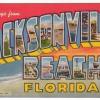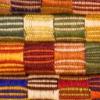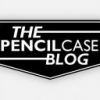Search the Community
Showing results for tags '#3776'.
-
This is a brand new platinum #3776 with medium nib fountain pen. Is the gap between the tines normal or bit much?
-
We are expecting the soft breeze of the Platinum #3776 Century Kumpoo in September '18. Make your reservation because they will be delivered in a very small quantity. With each pen we offer a matching ink from L'Artisan Pastellier ! https://www.sakurafountainpengallery.com/en/boutique/detail/3776-century-kumpoo-platinum Enjoy your day ! Catherine
-
Recently I have been looking on eBay for another #3776 to join my other two and I came across this http://www.ebay.co.uk/itm/PLATINUM-3776-The-Lantern-Transparent-Slip-Seal-Amber-Brown-14K-Fountain-Pen-/172623476885?var=&hash=item2831293895:m:mkHBCqKvkmE8tB0gypyk9qQ Now I do like the colouration of this, however, I am a bit dubious of the listing as while it probably is genuine and the price suggests it possibly is the phrase "Exclusive for ENGEIKA" has thrown me as while I know platinum make limited edition pens they are generally available from a number of retailers
-
Platinum #3776 Century Review This is my second review, so please let me know what you think in the comments. Also, there is a review of the Medium version of this pen in Bourgogne, so stay tuned for that. Table of Contents IntroductionPackagingForm Factor and AppearanceNib and SectionConclusion (TLDR)Statistics · Name: Platinum #3776 Century · Nib: 14k gold fine nib · Country of Origin: Japan, imported to US · Model Number: PNB-10000#51-F · Color: Chartres Blue · Price: ¥10,000 retail. Available in the U. S. for ~$150, and from importers for $70 · Included Items: Box, warranty papers, manual, cartridge Part I: Introduction and History In 1919, Shunichi Nakata a Japanese industrialist, founded the Nakaya seisakusho (which according to the company’s website means ‘Nakata: manufacturer of fountain pens,’ in Tokyo, Japan. Nearly a decade later, in 1928, Nakata changed the name to the Platinum Fountain Pen company. In 2011, eight years prior to Platinum’s centennial, the company announced the Platinum #3776 Century fountain pen to commemorate the company’s nearly century long existence. The name of the pen comes from the height of Mount Fuji (in meters). This happens to bear very strong resemblance to the Montblanc Meisterstuck pens, which have the number 4810 (the height of Mont Blanc in meters) embossed on their nibs. The pen also serves as an ambassador, of sorts, as one of the most well-known introductory 14k gold nib pens, along with the Pilot Custom 74 and Sailor Profit 1911 series. It is also an excellent pen overall, and with its street price of $70, it is a brilliant value. The pen is also available with excellent variety, as it is available in eight nib options–UEF, F, M, B, C (double broad), SF, and Music. Its inexpensive price, high build quality, and pleasant writing experience make it one of the most popular fountain pens in the world and one I recommend immensely. <sidenote> Over the past five years, Platinum has come out with a multitude of Limited Edition Centuries to augment the permanent collection of black with gold trim, Chartres Blue with either gold or rhodium trim, and Bourgogne with gold trim. The limited edition pens are contained within two categories, those named after cities, and the ‘Fuji Lake Collection’. There are three limited edition pens named after European cities and neighborhoods—the Nice (which was announced in 2013 and named after the city on the South of France), the Nice Pur (identical to the Nice except for silver accents instead of rose gold), and the Nyhavn (which was announced in 2015 as an Engeika excusive; it was named after the entertainment district in Copenhagen). The Nice pen is clear, with a somewhat clouded resin and rose gold accents. The Nyhavn pen, on the other hand, is much more audacious in design as it has a yellow cap and section along with a rose gold barrel, nib and accents. There are also five ‘Fuji Five Lake Series’ pens: the Mostu (2011, clear resin) Shoji (2012, light blue transparent resin), Sai (2013, clear resin), Yamanaka (2015, clear textured resin), and the final just recently announced Kawaguchi pen (2016, textured blue translucent resin with silver accents). </sidenote> Part II: Packaging (85/100) Functional, could be nicer The pen arrives very well packaged. The exterior box is white, with the Platinum name and logo printed on the front. On the back of the box are Japanese recycling notifications. The actual box of the pen is very similar to those Sailor uses in pens of a similar price range. It is plastic and covered in a faux-leather material that is actually quite pleasant. There are no markings. Once opened, the platinum logo in stitched in gold thread. The rest of the box uses a satin-like white material. The pen sits in a plastic sleeve with a clip-card providing its model number. This is all tucked under a little white ribbon to keep it from moving too much in transport. Unlike, for example, the Pilot box, the base of the Platinum packaging is glued in place. The packaging feels rather brusque. Although Platinum would like to believe that you would leave it on your desk, it is really just something you’ll probably put in a drawer. It will get the pen from A to B safely, but it’s design leaves a little to be desired. Depending on the reseller, the Pen may or may not come with a Platinum converter. As my pen was a Japanese import, it did not, however, I was able to secure one rather inexpensively from the same seller on Rakuten. In the box (in all cases), comes the pen, an instruction manual, and a warranty card. It also comes with one cartridge of Platinum pigment ink. In some cases, it comes with the blue ink, and in other cases (such as mine), it arrived with blue-black ink. Part III: External Form Factor & Appearance — 95/100 The pen is a classical cigar shape with a nice diameter and tapered cap and finial. It is also rather light, being roughly 21 g without ink. It owes this to its plastic construction, which unlike some of its cousins (such as the Pilot C74), does not feel cheap at all. Rather to the contrary, the pen is solid in the hand, with a perfect and weight and measurements to be a lightweight everyday writer. Capped, the pen measures 14 cm long (the cap itself measures 6.7 cm). Uncapped, the pen measures 11.7 cm. The barrel is exactly 8 cm, and the nib and section measure 3.7 cm. The nib itself takes up a majority of the section, measuring 2.2 cm while the section itself measures a comparably small 1.5 cm. However, the writing are is rather large at 2.5 cm long as the threads on the barrel are not sharp and can be used as a grip quite easily. If you prefer to hold your pen higher, the step between the threads and the rest of the barrel is quite small. The pen has a very comfortable diameter of 1.2 cm. Compared with the Pilot C74, which has a 1 centimeter diameter, it is far more comfortable for long periods. During one of my exams two weeks ago, I used this pen to write a seven-page essay, and I can affirmably say that the pen is extremely comfortable. My hand always felt at home on the grip, and it barely even got tired. The pen is made out of strengthened PLA plastic, and when looking at the pen for the first time, you will notice that it is truly beautiful. In the case of the Chartres Blue model, the resin is a rich blue color, with just a touch of translucency. It is really something that you have to try for yourself in order to truly understand, and when you do experience it, it is a sight to be seen. The gold accenting around the clip fit in very well with the resin color and only serve to make the instrument look even better than it already does. However, the resin is a bit more prone to scratching that the Custom 74, due to it sustaining a little scratch after a drop onto hardwood flooring. <sidenote> The pen's color is called the 'Chartres Blue' model because it is based off of the stunning blue stained glass windows of the Chartres Cathedral in Chartres, France. The stained glass windows in the cathedral are known for their deep, rich, blue color, and I think that Platinum did an excellent job emulating that in their pen. </sidenote> The clip is a rounded rectangle sharper angles on the top. It is connected to the cap by a small gold pen, very similarly to the Pilot C74. Near the bottom of the cap are two bands. One thicker, raised band at the bottom which says ‘#3776 PLATINUM MADE IN JAPAN,’ and one thinner band right above it. The cap screws on in 1¾ rotations. However, this cap has Platinum’s ‘Slip and Seal’ feature which is essentially a smaller, airtight cap that secures around the nib and feed, keeping the ink from drying out. When screwing the cap onto the pen, you can feel the mechanism engage in the final quarter turn. Platinum claims that the pen can sit for two years with pigment ink, and upon your first usage in two years, Platinum claims it will start without hesitation. Although I have only had this pen for a matter of weeks, much less years, I have not been able to test this. However, I can say that it has not hard-started once in my possession. The pen also posts quite well. Posted, the pen still remains balanced, however, if you have small hands, it could feel slightly back-heavy. I personally prefer it unposted as it is extremely well balanced no matter your hand size. The pen’s build quality is also top-notch. Never, in my possession, has it creaked or cracked. Although it is made of plastic, the resin feels solid and the pen benefits from its lightness. In comparison to the Custom 74, the pen just feels a little more professional. It weighs a bit more, and it feels like more of a writing Part IV: Nib, Section, and Writing (95/100) The section on the Century is simple, but comfortable. It is 12 millimeters in diameter, and 1.5 cm long. However, the threads on the barrel are not sharp, and extend the usable grip space by another centimeter. There is a gold band on the end of the section that shows where the section ends and the barrel begins. It also has a little lip at the end to keep your hands safely away form the nib. And that brings me to the nib, the defining feature of any pen. This pen is no exception. From a visual standpoint, the nib is rather plain, albeit rather large. It has the Platinum logo, an indicator for nib size and the text 14k and 585, signifying that the nib is 58.5% gold. The word ‘Japan is etched into the right side of the nib’. The only bit of decoration on the nib is that of an etching of Mount Fuji that is simple and tasteful. Below that is the number 3776, signifying the mountain’s height. It also has a breather hole that looks like a heart that I really like. From a design perspective, however, the nib is a little more interesting. It is very broad shouldered, allowing less line variation in the writing. It is also very large. These two factors make the nib hard as a nail when writing normally, but somewhat flexible (not as much as an sf nib), when you try to create variation. As said above, under normal conditions, this nib is very stiff. It will not give an inch unless you press down. However, if you do press down you will most likely punch through your paper because the fine nib is really quite fine, for a fine nib, (and pointy). It is finer that my other Japanese fine nibs and is a hair finer than a Jowo EF or a Lamy EF. Due to this, the pen also gives a fair amount of feedback. In the beginning, the pen may even border on scratchy. However, once your break the nib in, it gives enough feedback so that you can hear it write and you can feel the paper under you. It is definitely not smooth, though. If you prefer smooth, I would recommend you try the Medium nib in this pen, which is very, very smooth (review of that model is coming soon). The pen writes rather neutrally, the ink really determines if it is smooth or dry. So far, I have found that well-lubricated pigment inks, such as the Sailor Blue-Black I currently use with it, suit it the best. The feed has never clogged or hesitated and can write just as fast as I can. I am confident that this pen will be able to write whatever I need it to. If you can deal with a slight amount of feedback, the nib is pleasure to use. Writing sample on 90g Rhodia Part V: Conclusion (TL;DR) — 275 / 300: 92% — Very well recommended Compared to the Pilot, the Platinum is not a pen for fancy, ornamented writing. It is really more of a workhorse device. It is extremely capable, and can deal with pretty much everything I can throw at it. As a student, it is a perfect pen as its fine nib (coupled with the right ink), bleeds through very little, while providing a nice, steady, fine line. It is built well, and very comfortable to write with for long periods. I recommend it highly. Thanks for reading, Caleb
-
Hello, I'm looking to buy a pen from Engeika these days, and can't decide on one of these 2...Black Pilot Custom Heritage 91 and Bourgogne Platinum #3776 century, either with a Soft Fine nib. As far as Japanese pens go, right now I only own a Pilot Decimo and a Smoke CH92, both with Medium nibs, and I really like them a lot...the resin on the 92 really feels great, and the nib is beautifully smooth with a bit of give. I've read a lot of complains regarding Platinum's plastic, which some say feels cheap....I want to know if it's fragile/brittle in any way (more than the Pilot plastic)...I really love the Bourgogne color. So what do you say, is it worth getting another Pilot Custom Heritage (since I really like my first), or should I go for the #3776? Thanks!
-
-This review is an adapted version of the one that can be found on my personal blog (www.pencilcaseblog.com). Visit my blog for more pictures, a copy of the written review and of course many other pen, pencil, paper and ink reviews. Enjoy the review! (Full Platinum #3776 review: http://www.pencilcaseblog.com/2014/05/platinum-3776-century-fountain-pen.html)- Japanese high-quality fountain pens have grown immensely popular over the last few years, which isn't very strange if you consider the great quality of brands like Sailor, pilot, Nakaya,... Unfortunately, most of them are also quite expensive. The Platinum #3776 Century is different though, it's in a much more acceptable price range. But can it still keep up with the more expensive pens The #3776 is very similar to the Sailor 1911 Large I reviewed a couple of weeks ago. It has approximately the same shape, almost the same size,... Apart from the gold accents instead of silver, it is hardly any different in appearance. The looks of the #3776 are quite satisfying, it's a classic, cigar-shaped acrylic pen with classy gold accents. It's a very decently sized pen, at 14cm, or around 5.5 Inches when closed. However it is quite light, only 20 grams, but that's inherent to the acrylic material used for the body and cap. The difference in price is only slightly visible if it comes to design and build quality: The acrylic on this pen feels a bit cheaper, and seems slightly less scratch-resistant than the Sailor, there's also a small seam on the section of the pen. The center band has some very subtle and stylish engraving, this is also the only branding visible on the outside of the pen. The gold trims work quite well with the black acrylic, but for those who prefer silver trims: there's also a more modern-looking silver trimmed version available. Overall I really like the looks and the build quality of this pen is still very decent, it just isn't on par with the Sailor yet. I personally prefer to post the cap, because it adds some weight, but it's long enough to be used unposted as well! There is a little step from barrel to section, but I haven't really had any trouble with it. A cool feature of this particular model is the slip and seal cap. It ensures an airtight seal when capped, which makes it almost impossible to dry out. Platinum states that it can easily survive months without drying out. I'm really impressed by this feature, the system has worked flawlessly so far, it's so easy, but brilliant at the same time! The pen always starts to write as soon as it hits the paper. A very occasional hard start occurs, but not nearly as often as with other pens! On the business-end, you'll find a decent sized 14k gold nib that performs excellent. It has a rather minimalistic appearance, which gives the pen a modern touch. The Medium nib writes smooth, though with a noticeable amount of feedback. The flow is very balanced, not too wet, but not dry either, it doesn't skip at all (Also because of the slip and seal cap!). I found the Medium to be more like a European fine, but it's still broader than most Japanese Mediums would be. The nib performs really good, the price difference isn't noticeable at all when it comes to writing performance! All things considered, the Platinum #3776 Century is a great pen for those who want a high-quality Japanese writing tool, without breaking the bank. In fact, you can never go wrong with a pen like this - and same goes for the Sailor-, it's a design that will probably never go out of style! Yes, it does have a few construction flaws, but for around 170 USDollars, this is definitely a good deal! This model is also available in a silver trim version, as well as a transparent burgundy red and transparent Chartres blue version for the same price or even less!
- 42 replies
-

Sailor 1911 Profit Std Federal Blue Vs Platinum 3776 Chartres Blue
mknoblauch posted a topic in Japan - Asia
I was wondering if anyone out there owned a Sailor 1911 Standard Profit in the "Duke & Federal Blue" edition... I first saw this pen on eBay about 6 months ago and was intrigued to find another translucent blue pen a la Platinum 3776 Chartres blue. I stumbled on it again on Engeika's website, and can't stop wondering about it. The "Duke and Federal Blue" looks to be darker than the Chartres Blue color, and I in both the eBay photos and the ones on engeika.com that I saw, the translucence was only noticeable in the close up photo of the cap, suggesting that perhaps the resin on the Sailor might be thicker. Or maybe it is simply owing to the darker color? Both the 3776 Century Chartres and 1911 Standard are great pens are great pens from the reviews I have read, but if anyone has some insight regarding the 1911 Federal Blue, I would appreciate the help. Thanks in advance.- 8 replies
-
- #3776
- sailor 1911
-
(and 4 more)
Tagged with:
-
After having waited close to 3 months from the initial order, the #3776 black in black with UEF was delivered to my home yesterday. As there is no stock available at the time of ordering, Platinum handled this as an order-on-demand. So, my #3776 black in black was fresh off Platinum's production. The slip seal and the friction closing of the cap are similar to the rest of #3776 Century line models. The nib is what this pen separates from the rest. I looked it with my loupe and the tines are in perfect alignment and the tip of the nib is created only an experienced craftman can do. I don't believe any Western companies can do this in house. http://i4.photobucket.com/albums/y115/YS2003/IMG_4742_zpsf9de800a.jpg http://i4.photobucket.com/albums/y115/YS2003/IMG_4743_zps00eb27b5.jpg http://i4.photobucket.com/albums/y115/YS2003/IMG_4744_zpsd5939445.jpg http://i4.photobucket.com/albums/y115/YS2003/IMG_4745_zpse75cfc56.jpg http://i4.photobucket.com/albums/y115/YS2003/IMG_4746_zps0e265639.jpg http://i4.photobucket.com/albums/y115/YS2003/IMG_4747_zpsea965a6d.jpg http://i4.photobucket.com/albums/y115/YS2003/IMG_4748_zpsb39cb47e.jpg http://i4.photobucket.com/albums/y115/YS2003/IMG_4749_zpsf434521f.jpg http://i4.photobucket.com/albums/y115/YS2003/IMG_4750_zps291782ae.jpg http://i4.photobucket.com/albums/y115/YS2003/IMG_4751_zps668df9e7.jpg http://i4.photobucket.com/albums/y115/YS2003/IMG_4752_zps28278a59.jpg
-
We're delighted to have secured a very limited number of a very limited edition pen from Platinum: only 300 of these pens are available worldwide. Each Platinum King of Tigers Urushi Lacquer Fountain Pen is decorated by hand meaning that no two pens are the same. Featuring a hand-painted tiger on the black barrel, the tiger design is applied using matt charcoal powder and glossy black Urushi lacquer. Based on the classic #3776 design, this subtly stunning limited edition fountain pen is crafted by hand using traditional techniques. The Platinum King of Tigers Fountain Pen is in stock on our site now. What do you think of it?
- 18 replies
-
- platinum
- king of tigers
-
(and 3 more)
Tagged with:
-
FPN, I just returned from downtown Tokyo with my new FP purchase, the Platinum #3776 Century Sai. As an owner of the Shoji, I want to continue the collection of the five lakes around Mt. Fuji as they are released as part of my family's experience living in Japan. The pen comes in the standard Platinum white box. http://i1297.photobucket.com/albums/ag22/augustfamily1/Platinum%20Sai%20Product%20Review/PlatinumSai-6039_zpsecdf956b.jpg Inside, you find the normal pen items: paperwork, two Platinum pigment inks (one blue and one black), and the Platinum converter (in silver). Different from the Shoji box contents is a stamp stating "Written Using Platinum Pigment Ink." Nice marketing idea, but not an item I will end up using at work or in a journal. http://i1297.photobucket.com/albums/ag22/augustfamily1/Platinum%20Sai%20Product%20Review/PlatinumSai-6042_zps0fe7aefb.jpg The nib is a simply decorated 14k design with a simple #3776 and Platinum "P" engraved on it. Mine is a FM nib. http://i1297.photobucket.com/albums/ag22/augustfamily1/Platinum%20Sai%20Product%20Review/PlatinumSai-6047_zpsc70f2d35.jpg The pen has a nice heft to it and is easy to hold posted or unposted. I prefer to write with all of my pens unposted. It's obviously a demonstrator style that was a Platinum design decision to "express the profound nature of Lake Sai, the central like in the five lakes around Mount Fuji that is surrounded by a sea of trees and mountains." The cap is the new Platinum "slip and seal" design that is supposed to allow pens to sit with ink in them for up to a year without drying out. I haven't owned one of them long enough to verify this claim, and I usually rotate through all of my pens on a regular basis to prevent ink from sitting that long. http://i1297.photobucket.com/albums/ag22/augustfamily1/Platinum%20Sai%20Product%20Review/PlatinumSai-6044_zps9dc3834c.jpg Overall, the writing experience is a nice one that you could expect from Platinum. This is not an expensive Visconti Dreamtouch nib or wet European Pelikan or Onoto writing experience, and I won't try to compare this nib to those different styles of writing. I also won't compare the writing to vintage pens as that opens up far too many comparisons that are too difficult to encompass. Instead, this FM nib lays down a very comfortable line of wet ink. No skips, no hard starts, no scratching. Instead, you have a reliable companion with just the right amount of feedback on fountain pen-compatible paper, and a pen that is ready to write at a moment's notice with an easy, gliding touch that you would expect from one of Japan's big 3. I like the feel and weight of the pen as an all-day writer with a look at the remaining ink through the pen. http://i1297.photobucket.com/albums/ag22/augustfamily1/Platinum%20Sai%20Product%20Review/PlatinumSai-6049_zps8dfb38ab.jpg My only critique of this pen is that I like the style of the Shoji cap slightly better. Inside the Shoji slip and seal cap is a list of the five lakes surrounding Mount Fuji. Shoji is presented in a reverse font and highlighted in silver. This is a nice touch for the pens designed to be collected in the series. As mentioned above, this was probably a design decision for the Sai, and the simplicity is nice. One unique item that came with my purchase is the Platinum pen cleaning kit. The salesman talked about the Platinum pigment ink (which I use in my Shoji) and the need for a good rinse every year or so. I like to practice good pen hygiene and keep my pens in use or flushed and dried, but I'll give this a try when the time is right. Buzz















